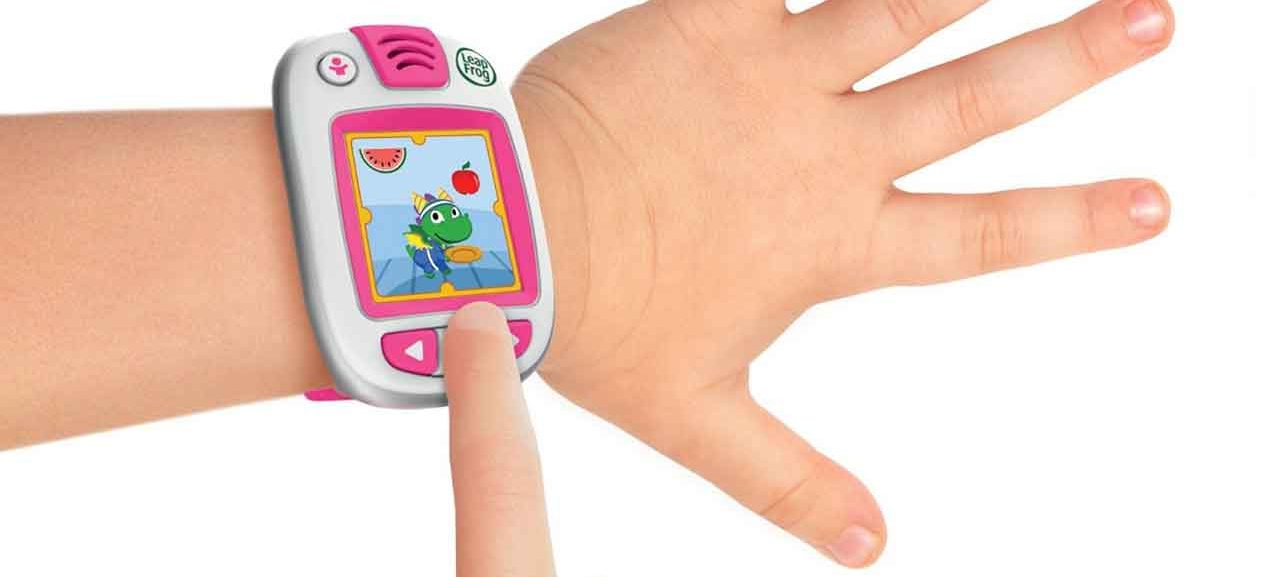Fitness Trackers for Kids

Why not make their screen time more worthwhile? These six fitness devices turn the exercises kids dread into a game they can’t wait to play.
Today, kids spend just about every waking minute when they’re not in school parked in front of some sort of electronic device. Cartoon watching, texting, and video game play add up to about seven hours a day of screen time, by some estimates, which is way too much. Instead of simply letting kids stare into the colorful void, why not make their screen time more worthwhile, with an electronic device that uses the technology they love to get them moving?
These six fitness devices turn the exercises they dread into a game they can’t wait to play. They’re the fitness equivalent of adding pureed spinach to a batch of brownies. Kids will have so much fun with their new gadget, they’ll have no idea it’s good for them.
YOU MIGHT ALSO LIKE: Fitness Devices for Men
LeapFrog LeapBand
LeapFrog’s hugely popular electronic toys and tablets helped foster the learning-is-fun-with-technology movement. Now the company aims to do the same for fitness with its LeapBand activity tracker. These brightly colored bands offer children an enticing carrot on a stick — a virtual pet (dog, cat, monkey, panda, dragon, robot, penguin, or unicorn) they can feed, clothe, and groom. The catch is, to buy food, clothes, and toys for their current pet or unlock a new one, kids must earn an electronic currency called “joules” by completing a series of physical challenges. All the challenges are fun and easy — think wiggling like a worm, or leaping like a frog, not running a 5k. The app is pretty simplistic — it doesn’t track a lot of details like step counts or intensity. Kids see how active they are through a simple energy bar. But it’s enough to get them moving. And, the LeapBand adds a food component called Pet Chef, in which kids assemble the ingredients of a healthy meal. The game is a sneaky way to get kids to learn how to make smarter food choices.
X-Doria KidFit
When parents tell their kids to get up and moving, their words often fall on deaf ears. But when a smartwatch gives children the same urging, they’re more likely to pay attention. X-Doria, a company that’s made its name selling smartphone accessories, has introduced a fitness tracker to help kids ages 5 to 13 reach their fitness goals. The target is simple and straightforward — try to hit the 100-point mark each day. Kids can’t see the number of steps they’ve walked without logging onto the smartphone app, but the 100-point goal is a simple, straightforward way to make sure they’re taking enough of them. KidFit has a sleep tracker to make sure kids are getting their recommended nightly slumber, too.
Nabi Compete
You can’t miss a Nabi Compete. Its neon-colored band surrounding a white face stands out in a crowd. Nabi, the company that makes tablets for kids, has expanded into the wearables market. Its video game-like app puts fitness goals into terms kids can understand. Rather than aiming for a bland-sounding 10,000 steps, kids are challenged to walk enough steps to work off a slice of pizza, or cross the Brooklyn Bridge. Appealing to kids’ competitive nature, Nabi Compete comes two to a pack, letting kids vie against each other to see who reaches their goal first. Like the LeapBand, Nabi Compete lets kids earn points they can use to care for a virtual pet.
Geopalz Wireless iBitz
Geopalz iBitz is a pedometer, but it’s so much more than a simple step counter. When kids clip the device onto their waistband or shoe and log on to the app, they blast off in a rocket ship, headed off on a space adventure. Every step they take carries them farther out into the solar system. And each time they hit a step goal, they reach another planet and earn points, which they can collect and exchange for rewards. Parents set the reward levels and can add digital currency to help kids earn real prizes — like toys, or credit on Disney’s Club Penguin.
Zamzee
Parents know their kids should be getting 60 minutes of exercise daily. The challenge is to keep them moving for that long. The Zamzee activity meter adds a reward, and a healthy dose of competition, to make those minutes seem much more appealing. The meter clips onto a child’s clothes or shoes and records activity. To see how far they’ve walked or run, kids plug the meter into their computer using the built-in USB, and log into their account. Activities earn kids Pointz, which they can use to upgrade their avatar. They can also interact with peers online, and brag about how many Pointz they’ve earned. Pointz can eventually be exchanged for Zamz, which kids can use to buy cool prizes like iPod Nanos and gift cards. According to the company, Zamzee is a proven motivator. A study found children who used the technology were nearly 60 percent more active than kids who didn’t. The one downside is that Zamzee has been absorbed into the CaféWell Health Optimization Platform, which means your insurance health plan needs to be a member for you to participate.
Sqord
Sqord adds a team component to the activity tracker. It’s designed for use by schools, teams, youth groups, and camps (groups of 10 or more qualify for a discounted rate). Kids create their own, customizable PowerMe avatar. As they exercise, they rack up virtual points and earn medals on the Sqord website. The more points they earn, the sooner they can power up to the next level. The social component of Sqord lets kids challenge their friends to competitions, and motivate one another by sending a Squawk (personal message) or High Five (congratulations!).
Updated:
January 26, 2016